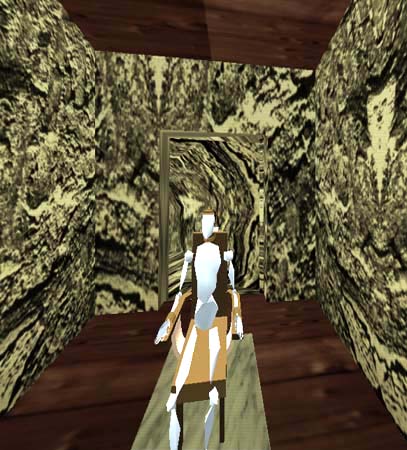
- the Torture of St. John -
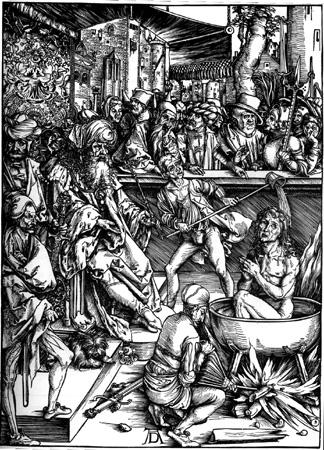


"The Torture of St. John" is one of Durer's more unusual looks at biblical mythologies.
Unlike the other woodcuts that were created based on John's revelations, Durer's
approach to The Torture of St. John lay in legend and lore, and plays with John's
mystique as a harbinger for the Apocalypse.
Set along the backdrop of a medieval land, the Torture of St.John, puts John in the midst of what appears to be the King's court. Here he is being "tortured" while the court looks on in apparent approval of the sadism occurring. John, unlike his fellow apostles, would survive his ordeal and die a natural death years later.
Analysis of the word torture defines itself as the anquish of body or mind. Something that causes agony or pain. The infliction of intense pain (as from burning, crushing, or wounding) to punish, coerce, or afford sadistic pleasure.
Approaching this woodcut, the distinction that torture is synonomous with discrimination was made. The two go hand in hand. One cannot exist without the other. If torture is the anguish of body or mind, then discrimination is its bedfellow. Throughout the years, discrimination has been the root of all forms of torture. The Inquisition, The witch trials, Nazi prison camps, Racism. All of these examples of man's inhumanity toward its fellow man based on their notions of superiority from what they believe in as opposed to what others believe.
The room is set in the form of an ancient cross. The user enters the room through the base of the cross and encounters a model of a person sitting at a desk with a book laid out to the woodcut of Durer's "The Torture of St.John". The model is St. John, head turned down in sadness, and arm reaching out toward the user in a gesture of pleading for help.
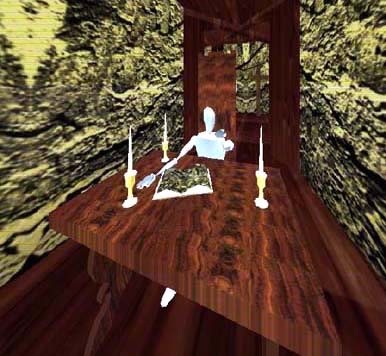
Navigating past St.John, the user encounters an intersection which leads to three different subrooms ... The room to the right leads to a recreation of St.John's torture. Here the user can analyze from different perspectives the activity of the woodcut. The faceless models not arrayed in any recognizable garb allow no identity to escape. Only their position and physical gesture denote their roles. The user can assume St. John's position, the king's, the torturers, the onlookers... and so on. When the user assumes the position of one of the characters, that character vanishes and forces the user to play the role of that character.
The next subroom creates a scene closer to home for many in America. It is the scene of a Klu Klux Klan hanging, where the background depicts a burning cross. The clansmen have just hung a person. When the user enters the room, the model of the hung person falls and the environment changes colors to from a bright sunny day to a dark and stormy night, reminiscent of the day Christ was crucified.
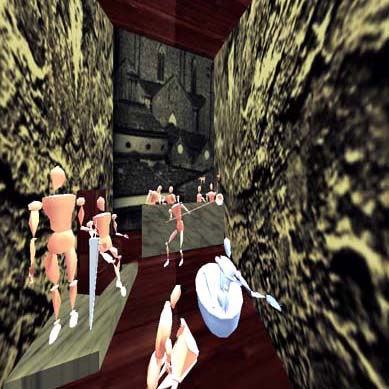
The user departs to the last room and finds it to be very empty save for a chair that sits to the side... The chair is the final form of torture. Death. The user approaches the chair as the last experience in this room before continuing on to the Bosch room.
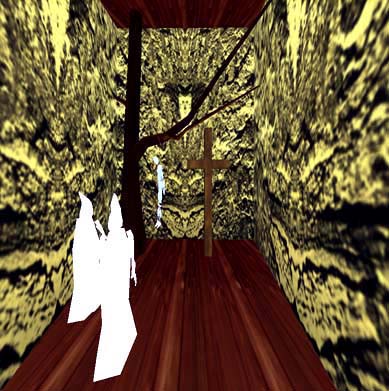
Sound consists of a low drum excerpt from Wagner's Siegfried .
